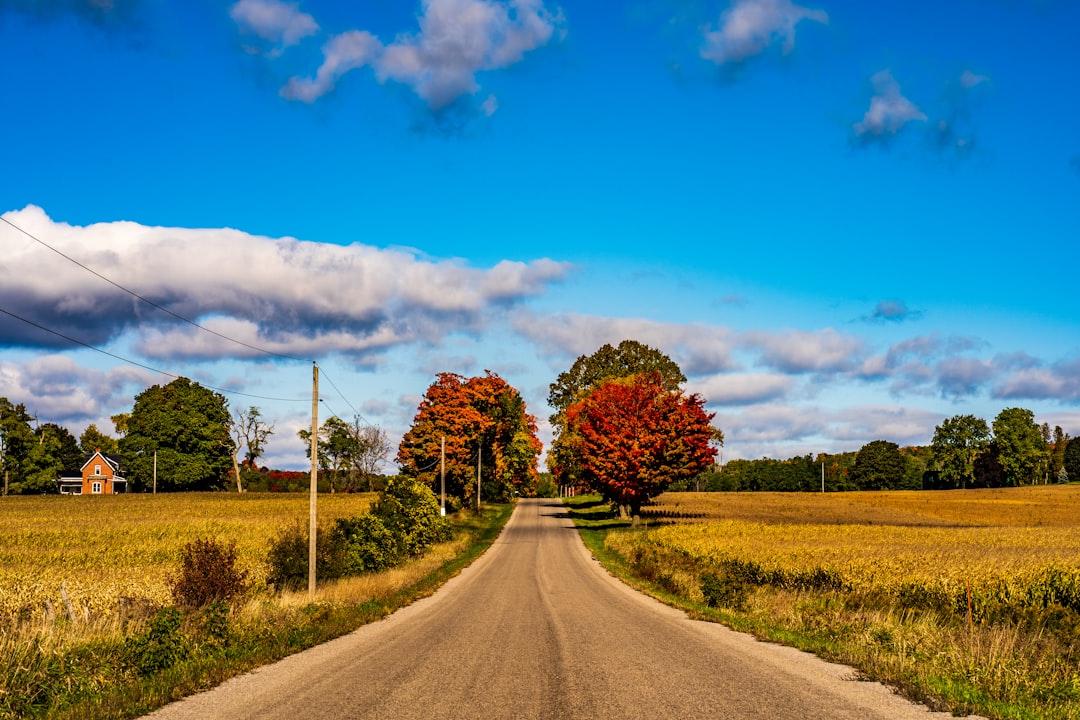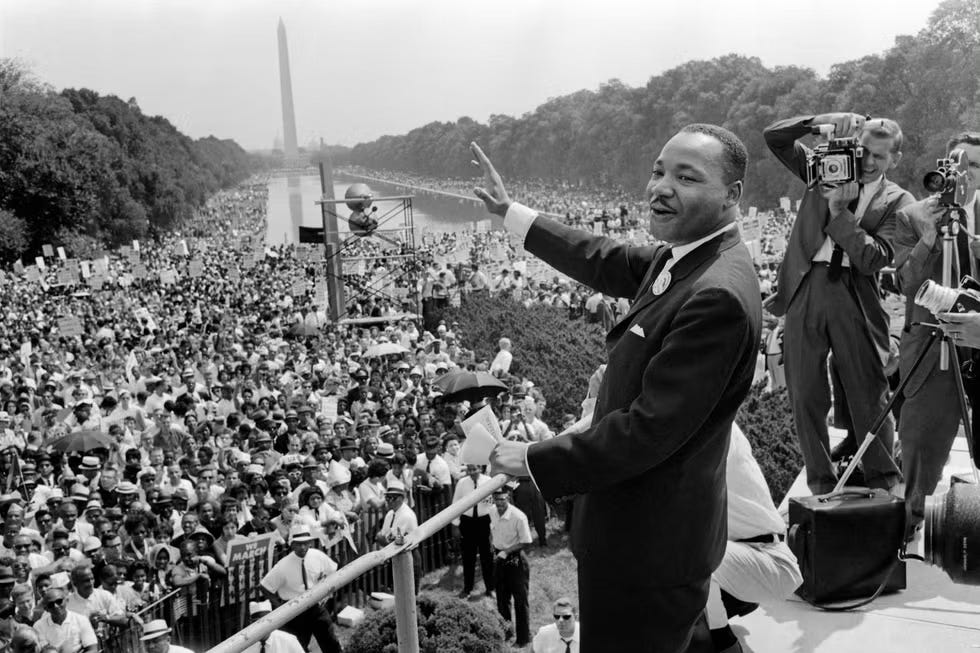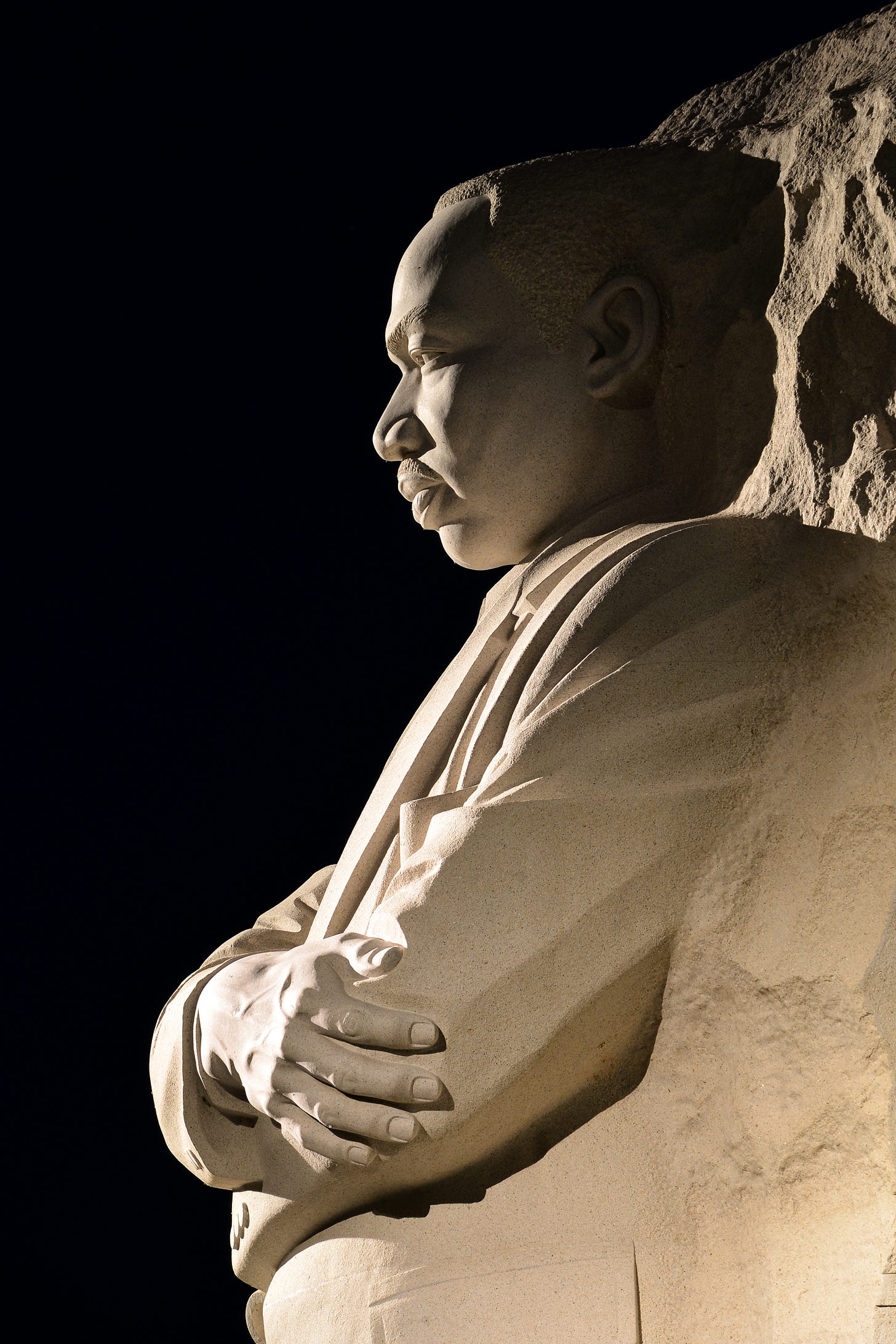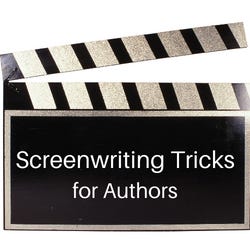We’ve been talking about Villains and Antagonists. SELMA is one of the best examples I know of the powerhouse storytelling technique of building FORCES OF ANTAGONISM.
The film has a wildly ambitious goal: to depict the monolith of U.S. racism; to educate its audience about King, a key civil rights battle, and the history of voter suppression in America; to break the history down into understandable segments to change the hearts and minds of its audience; and to prompt present-day action by awakening both rage and inspiration. Not just a brilliant teaching film, it’s really a textbook for effective civil action.
I’m challenging writers following Screenwriting Tricks for Authors to write at least 15 minutes a day this year. Watching 15 minutes of a movie at a time and working on your craft definitely counts! I can passionately recommend taking a look at the first 15 minutes of Ava DuVernay’s Selma.
One of the most effective ways of leveling up your writing is to get familiar with and start consciously using STORY PATTERNS. (What KIND of Story is It?). In Selma, the filmmakers have chosen the structural form of a War Story and ingeniously use storytelling conventions of great war movies to keep the stakes high and emotional tensions fraught, while avoiding the usual pitfalls of biopics.
The film has a wildly ambitious goal: to depict the monolith of U.S. racism; to educate its audience about King, a key civil rights battle, and the history of voter suppression in America; to break the history down into understandable segments to change the hearts and minds of its audience; and to prompt present-day action by awakening both rage and inspiration.
Director Ava DuVernay brings not just her brilliance but some serious documentary chops to this movie. Her films 13th and When They See Us are also must-sees, especially in a time of concerted assault on the full truth of US history. Selma is a textbook both on how to tell a great story—and how to change the world.
Screenwriter Paul Webb was inspired to write the script from talks with Dick Goodwin, a speechwriter for President Lyndon Johnson (and husband of Pulitzer Prize-winning historian Doris Kearns Goodwin).
When I break down movies, I do it sequence by sequence. And the reason I teach this way when I teach is that once you GET this kind of story analysis, then every single time you watch a movie or TV show, you are working on your craft. If you work your way through a couple of movies like this, you will have these tools for life.
If you need to catch up on how and why films tend to be structured in 15-minute Sequences and why it’s so game-changing to use the technique in novels, you can start with this post:
The workbooks introduce the Three-Act, Eight Sequence Structure in Chapter 5, with examples throughout the books
As with The Hunger Games what I suggest here is you watch the whole film just to experience it, and then watch it again 15 minute sequence by 15 minute sequence,
In this post, I’ll jump-start that process for you by breaking down Sequence One.
First I want to point out two general techniques that the filmmakers are using to accomplish their huge goal of portraying the evil of racism and effecting intellectual, emotional, and political change.
1. UNITY of time, place and action.
I’ve always thought biopics are maybe the hardest genre to get right. But this isn’t a biopic, and it announces that in the title. It’s not called King, it’s called Selma.
The filmmakers have chosen one event to illuminate King’s life. That is classic UNITY: a storytelling technique detailed by the first story structure guru: Aristotle, in his classic manual The Poetics. Selma focuses on one representative event to illuminate King’s life, the civil rights battle, and the ongoing historical struggle against racism.
2. The KIND of story it is:
The filmmakers have chosen the structural form of a War Story and used storytelling conventions of great war movies to create a story line every bit as riveting as a thriller.
And it also deftly presents a dystopian society, as we have been talking about in the dystopian thriller The Hunger Games. But in Selma this dystopian society is real, and we’re all living in it.
I’m going to be putting some of these story breakdowns and other useful videos up on YouTube, so if you’re interested in getting live versions of some of these concepts we’re talking about here, please subscribe!
Overview:
And Sequence 1:
And read on for the text version!
Now, let me say something up front about film analysis. There’s no right way to do it! The important thing when you’re doing your own analysis is that you are looking at a film to see what the filmmakers are doing to figure out WHY and HOW those choices have such an impact on you—so that you can then use those techniques to create the effects that you as a storyteller want to have on your reader or audience.
So sometimes I’m going to be talking about what I get out of a scene, and you’re not necessarily going to agree, and that’s fine, because hopefully that will make it easier for you to define what’s happening in that scene, for you.
When I talk about film, unless I know who made the artistic choice that I’m talking about, I prefer to use the general word “filmmaker.” We don’t know who made certain choices, whether it was there in the screenwriter’s original script, or made by the director later, or an actor contributing a key line.
The key filmmakers here, again, are director Ava DuVernay, screenwriter Paul Webb,
And I have to point out that Oprah Winfrey’s Harpo Films was one of the producers. Oprah never participates in anything except from a place of the most exacting excellence. And that kind of energy always infuses a creative project.
SEQUENCE ONE:
Sequence One is the first fifteen minutes of a movie, approximately, and that corresponds to about the first 50 pages of a 400-page book.
Sequence One tends to be about the Introduction of the Hero or Heroine in their Ordinary World. We learn their SPECIAL SKILLS, their GHOST or WOUND, and what they think they want (DESIRE) which is often different from what they really NEED. And by the end of SEQUENCE ONE there will usually be an INCITING INCIDENT, or CALL TO ADVENTURE, that focuses the Heroine’s Desire and compels them to leave their ordinary world and go off into a SPECIAL WORLD to win that Desire.
We will also often be introduced to the Antagonist or Villain, the opposing force, in Sequence One. And in most good stories, or maybe all, there’s not just one Antagonist, but FORCES OF ANTAGONISM (See The Hunger Games for another strong examples of Forces of Antagonism).
In Selma, the first two scenes are The INTRODUCTION of the Hero. There are some very interesting choices here.
OPENING IMAGE. I want you to get really skilled at analyzing opening images. A good filmmaker will layer so much into those first few seconds of a film. Why do you think DuVernay made these choices for the Opening image?
Then in the Opening Scene, We see King and Coretta King as an ordinary couple, dressing up to go to some formal event. Martin is grumping about not wanting to wear an ascot, worrying about “the boys back home” thinking he’s gotten above himself.
Everyday, real people concerns. They talk about very ordinary dreams: longing for a quiet and peaceful life in a small college town, Martin as a professor and pastor of a church. Coretta wanting their own house with their own mortgage.
In other words, the basic American dream.
The catch is, for this couple just to be able to live that ordinary American dream, they will first have to overturn the entire structural system of racism.
The opening scene also I believe is establishing King’s ordinariness because it wants us to be in his shoes, in his skin, and to do that the filmmakers have to momentarily suspend our sense of King as an icon, one of the greatest American leaders of all time. The filmmakers want to inspire us to action, and they have to make us believe that WE can effect enormous change, that it’s not the exclusive province of a rare leader like King.
And also, on the other hand, the film has to try to create empathy in an audience member who is more entrenched in white supremacy.
Only after the film has established this ordinariness, do we see King step out on the stage to accept his Nobel Peace Prize.
So the film starts with King at a pinnacle of world recognition, which he is now going to leverage in this battle against racism. He’s going to go straight to the President of the United States to make demands.
But first, while King is making his Nobel speech, there is a flashback (that feels present-tense) to the 16th Street Baptist Church bombing in Birmingham by white supremacist terrorists, that killed those four little black girls and injured 22 other people. (His beginning words on the voice-over are: “I accept this honor for our lost ones.”)
This is a “Nature of the Beast” scene, which viscerally depicts the enormity of the evil that King is up against. It also depicts the Hero’s GHOST or WOUND: he’s lived all his life with the monster of racism. And it’s also the CALL TO ADVENTURE, King will also get an invitation, a request for him to come to Selma, but I think this prolonged and horrific murder scene from the past is the real Call to Adventure scene (and King will literally say so in an upcoming church sermon). THIS is what King is fighting. The true ANTAGONIST is racism.
And then the next scene depicts the everyday evil, and the specific evil that the battle in the film will be about: voting rights. We see Annie Lee Cooper go in to the courthouse to try to register to vote, not for the first time, and the white male registrar sadistically puts her through a test that we know he’d never be able to pass himself.
Now, I’m a huge fan of Oprah as a social leader and as an actor. She’s doing both, here. As an actor she submerges herself in the ordinariness of this noble and dignified woman, under these grotesque circumstances. But she also brings the subliminal resonance of being one of the most powerful influencers on the planet. And Oprah would be the first to say we all have that power and excellence in ourselves. It all combines to underline the THEME that in our ordinariness we have the power to make huge changes.
The encounter is a battle scene between these two characters. We want Annie Lee to win, but the fact is, she can’t win. It’s a stacked deck. The whole thing is sadistic, it’s brutal to watch, and it’s also clear that this is happening every day, in courthouses all over the South. The FORCES OF ANTAGONISM, these foot soldiers of racism, are legion.
That’s what our crew is up against.
So this was a skirmish between foot soldiers.
Now we cut to the first encounter between the two generals, MLK and the most prominent human ANTAGONIST of the story: President Lyndon Johnson.
Selma is an excellent example of the concept of FORCES OF ANTAGONISM. There is rarely just one human villain in a good story; it’s more useful to think of multiple Forces of Antagonism, which can include a villain, minions, secondary antagonists, the internal conflict of the hero/ine, a whole society (as in The Hunger Games and Selma), and non-human villains. So it’s useful to ask yourself: What are the Forces of Antagonism of my book or script? And list them!
In the movie, Johnson’s first words, to his lieutenant are: “Aren’t we done? Are we not done with this?” (This, meaning the battle for civil rights, voting rights, equality…) nd Well, clearly, they weren’t, and we aren’t. And we hear Johnson’s DESIRE and PLAN going into what is another battle scene (negotiation): “What he needs to do is get on board what we want for once.”
In the meeting, the summit, we learn Johnson’s overall DESIRE and his weakness, or Achilles heel:
He wants to be remembered for his 1964 act ending segregation and his civil rights record.
He wants statesmanlike King in charge of the civil rights movement rather than “Malcolm X militants.”
And he wants King on board for his “War on Poverty” that he says would benefit blacks and whites.
Now King spells out his DEMANDS (demands are a typical component of war story negotiations), breaking down the causes of the injustice we have just experienced emotionally with the Annie Lee Cooper scene.
We want Federal legislation granting Negroes the right to vote, unencumbered.
We want a Federal protocol of eliminating the decades-long dismissal of the illegal denial of Negroes seeking the right to vote.
And we want robust enforcement of that protocol.
And then he breaks down in one astonishing sentence, step by step, how it is not just denial of the basic right to vote but that keeping Black citizens from registering also keeps them off juries, so not one of the white killers of thousands of Black people in the South has been convicted.
And we see Johnson is not only full aware of all of this, he is ashamed. He can’t quite look King in the eye when King is reminding him of it. (We see this same telling inability of the antagonist not being able to look the heroine in the eye in the first scene with Lecter in Silence of the Lambs.) And that’s a PLANT: a SET UP for a payoff in the FINAL BATTLE.
But King loses this particular battle, when Johnson brings the meeting to an end, saying, “Voting rights will have to wait for now.”
King goes downstairs where his own lieutenants are waiting for him and announces the new PLAN: “Selma it is.” We don’t know what that means, yet, but we’re about to find out.
13:30

Cut to a car on a road in open farmland, crossing the state line into Alabama - a visual CONTRAST that takes us INTO THE SPECIAL WORLD of the deep South. King and his lieutenants, Andrew Young, James Orange and Ralph Abernathy, are in the car with another soldier, activist Diane Nash. (This is a GATHERING THE TEAM scene). The men’s chat has an ominous tone that spells out the life and death STAKES. Diane Nash continues the war imagery, saying “This right here is the next great battle”. Orange jokes that “It’s a decent-looking place to die,” which makes him a GUARDIAN AT THE GATE, a common character or element you find in the CROSSING THE THRESHOLD scene who says, “Go back before it’s too late..”
This element of warning is an extremely effective technique to create SUSPENSE, raise STAKES, and viscerally involve the audience or reader in the action to come.
There’s another threshold warning as they arrive in downtown Selma and go into a hotel with words carved into the column beside the door: “Serving whites only since 1855”.
Another member of the team, Bevel, meets the car, and there’s a brief but sexy love interest moment with Nash. He says “Selma is the place. They’ve done a lot of ground work here and they ready.” We also see another FORCE OF ANTAGONISM that will continue throughout the movie, in the form of the government surveillance of King and his team: an invisible presence indicated by an official seal and typing on the screen noting King’s movements.
Inside the hotel tensions are already high; white patrons are aghast as King and his team walk up to the registration desk and King signs the registration book. A young white man walks up to King and punches King directly in the face - in full view of local POLICE, who do nothing (the local cops are another FORCE OF ANTAGONISM). But in a TWIST, King sees that punch as a win. As his team surrounds him and walks him toward his room, King mutters, “This place is perfect.”
SEQUENCE ONE CLIMAX, 16 minutes in.
And for some serious inspiration, here is Dr. King’s Last Sunday Sermon.
Why subscribe?
Screenwriting Tricks for Authors is a reader-supported publication. Please consider contributing to this work by becoming a free or paid subscriber!
Likes, Comments and Shares are really helpful and much appreciated.
Know someone who needs to read this post? Why not share it?
Need some help? The Screenwriting Tricks for Authors workshop is available online, as a self-paced course with all the videos, assignments, movie breakdowns and personalized feedback you need to get that book written this year, 15 minutes at time.
In three parts, and you only pay for what you use.
If you have a first draft of a book or script already, or need more feedback, get targeted help getting you over the finish line in The Writers’ Room.
Get the workbooks:
Stealing Hollywood ebook, $4.99, also available as print workbook
Writing Love ebook, $2.99







